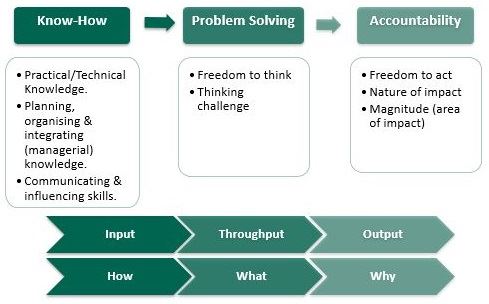by Paul Kauffmann, PhD, PE, CPEM, FASEM
One of the consistent and critical challenges for engineering and technical managers is to assure employees are treated fairly and consistently. Job grading systems that logically rate, compare, and evaluate various positions are a foundation for this effort. Consider a few related questions: How does a manager fairly compare a data analyst, a system programmer, and a senior mechanical engineer in a specific organization? How does the organization measure the relative values of these positions and identify appropriate and consistent pay ranges for these positions? National pay scales are easy to find but they do not reflect the job descriptions and the performance expectations of a specific organization and work context
Frequently, methods involved in the job grading process are not well known and are too often neglected in engineering management education and training. The purpose of this article is to provide a basic overview of one of the common approaches used in many organizations: the Hay or Korn-Ferry method. According to one source, the Hay Method of Job Evaluation is the most widely applied method in the world, used by over 7,000 profit and non-profit organizations in some 40 countries.
Although the Korn-Ferry system is proprietary, company literature and web searches reveal key details on how this job grading system works. For scientific, engineering, and technical positions, it examines three key factors (working conditions are often omitted in these “office” oriented occupations):
- Accountability measures the type and level of value a job can add and has three dimensions: Freedom to act, nature of impact, and magnitude of impact.
- Know-how reflects the sum total of every capability or skill, however acquired, needed for fully competent job performance. It also has three dimensions: Practical / technical knowledge, planning / organizing / integrating (managerial) knowledge, and communicating / influencing skills.
- Problem solving encompasses the use of know-how to identify, delineate, and resolve problems. This factor has two dimensions: Freedom to think and thinking challenge.

Through a series of proprietary guide charts that can be calibrated for a specific organization, the Korn-Ferry system assigns points using a geometric scale to arrive at a point total for a position. Typically a 15% difference in points is the hurdle to distinguish different levels.
This job level or step information can then be used for a wide range of applications such as pay grades, organization design, job design, and succession planning to name a few. For example, in a one-step difference, the lower role may be the successor to the higher role, or this might be a technical progression ladder path. Two step differences might serve to identify an unusual promotion move that needs to be rigorously explored. Three step differences might be a focus for career development or training programs.
Many organizations have a series of committees to review the grading and point results for consistency and fairness. Although most of us avoid committee assignments, serving on a division or corporate Hay review committee can be a very worthwhile experience and teach a great deal about how the various parts of the company are structured and operate.
About the Author
 Paul Kauffmann is ASEM’s past Executive Director and is Professor Emeritus at East Carolina University. Paul is a Professional Engineer and has over 20 years of industry experience in positions ranging from design engineer to plant manager and engineering director. He is a Fellow of ASEM and a Certified Professional in Engineering Management. He holds a BSEE and MENG in mechanical engineering from Virginia Tech and a PhD in industrial engineering from Penn State.
Paul Kauffmann is ASEM’s past Executive Director and is Professor Emeritus at East Carolina University. Paul is a Professional Engineer and has over 20 years of industry experience in positions ranging from design engineer to plant manager and engineering director. He is a Fellow of ASEM and a Certified Professional in Engineering Management. He holds a BSEE and MENG in mechanical engineering from Virginia Tech and a PhD in industrial engineering from Penn State.
